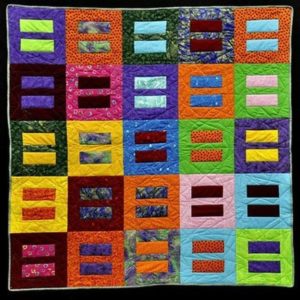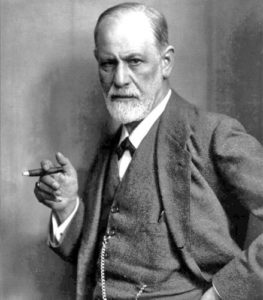What will make the pain of depression stop?
Sometimes the ache is dull, other times sharp. It can last a few hours, days, or weeks.
This is ground zero for depression sufferers. What can I do to feel better?
The answer is often elusive. Many don’t know where to get help, let alone walk the path of healing. Recovery starts and sputters for others: they feel better on a med, then it stops working. Or, they start a bold new exercise regimen, only to see it fizzle.
What to do?
There is no one-size-fits-all cure for depression. That what makes it so exasperating. It isn’t like having a bad cold where Nyquil will do the trick for most. Rather, depression is an illness of the body, mind, and soul that doesn’t lend itself to simple fixes. Because we’re all humans with bodies and brains, some things will generally work for everyone; exercise comes to mind. But because we’re also unique, we need a tailored recovery plan to get and stay better.
We need a quilt of healing.
Making Our Quilts
Years ago, my mom and grandmother would make winter quilts in the Autumn that would keep us warm long into those frigid nights. They provided not only warmth but comfort.
They would collect pieces of cloth during the year for the quilt, cut out patches, and then sew them together.
When I think of the different things we can do to feel better, each represents a different piece of cloth that when woven together, become a tapestry of wellness; a quilt to not only to keep us emotionally on keel but comfort us.
When asked about my recovery, I say no one thing is a panacea. No one pill will squash your depression, but it might be a patch that when woven together with others, will help you to heal.
It takes time to find your patches and weave them together.
You need to have a bit of patience, determination, and luck. It’s taken me a while to find my patches and piece them together, but here’s what my mine looks like.
Exercise
Going for a walk is better than nothing, but usually doesn’t work for me. For days when depression is deep in my bones, and I don’t feel like therapy because I have no words to describe my sorrow, really hard exercise is the only remedy — the sweaty, panting, and, at the end of it, the boy-I-am-glad-I-am-done-working-out-but-I-feel-pretty-good workout. Many studies have shown that exercise is great for mild to moderate depression. For more insight, read Spark: The Revolutionary New Science of Exercise and the Brain by John Ratey, M.D. In particular, Chapter 5, “Depression: Move Your Mood.” Most of you know that exercise will help your depression, but don’t do it. You don’t have any motivation. The only way around this is just to do it. Find a way.
Therapy
I lucked out on this one. My therapist, Jerry, is a 74-year-old psychologist who grew up in the Bronx. He’s been with me fifteen years. He’s my friend, Obi-wan Kenobi wise elder, and father I never had. Remarkably, he showed up and stayed at my mom’s wake for two hours when she died seven years ago. True, there are times when nothing much happens in our sessions; it can feel more like old friends catching up over coffee. Then, there have been times when some holy intervention happened, and I see something so clearly that I’ve never understood before. Jerry helped me see the “twisted thinking” of depression. If you’re not in therapy, you need to be. If you are in therapy, the thing to remember is that you need to apply the things you’ve learned to your daily life.
Spirituality
 I think of spirituality as being grounded in goodness. This piece of cloth is essential for me. Without it, no matter how much I exercise or go to therapy, I feel lost. I have faith that God is bigger than my depression. Life, in all its bursting technicolored craziness, is richer than my depression. Praying helps me remember that. I am part of something larger than my illness. When dialed into it, my spiritual life puts things in a larger perspective. It motivates me to be a better person. I tell God about my pain. And I feel, much of the time, He’s listening. Read The Catholic Guide to Depression. For a more meditation-based approach, check out the book The Mindful Way Through Depression.
I think of spirituality as being grounded in goodness. This piece of cloth is essential for me. Without it, no matter how much I exercise or go to therapy, I feel lost. I have faith that God is bigger than my depression. Life, in all its bursting technicolored craziness, is richer than my depression. Praying helps me remember that. I am part of something larger than my illness. When dialed into it, my spiritual life puts things in a larger perspective. It motivates me to be a better person. I tell God about my pain. And I feel, much of the time, He’s listening. Read The Catholic Guide to Depression. For a more meditation-based approach, check out the book The Mindful Way Through Depression.
Yoga
I’ve always been interested in yoga, but never practiced it. My wife and I are empty nesters now, so we signed up for a once-a-week introductory course of yoga. The first night, I learned that a lot of emotions are stored in our hip joints. So, the teacher directed us to a series of yoga movements to work them. Who would have thought? Hips! While I am just starting done this path, this may be a patch you also wish to explore. The stretching opens up your entire body in a way that hard physical exercise can’t. Check out the book Yoga for Depression: A Compassionate Guide to Relieve Suffering Through Yoga by Amy Weintraub and this article “Breathing Away Your Depression.”
Less Tech
I feel I’d be better off if I chucked all my tech gadgets off a cliff. Well, sometimes. Cellphone, laptop, the whole menagerie of things I’m wired into too much of the time. I don’t understand the chicken-or-egg dynamic of depression and too much tech, but it’s been my experience it exists. Recent studies confirm this. Too much screen time eggs on our depression. Much of my net surfing is appallingly mindless. I trapeze from one website to the next with no rhyme or reason. While time spent on the net felt good in small doses, too much and I’d feel shitty afterward. While we can’t divorce ourselves from tech, we can reduce the amount of time we stay on-line. When I sense I am spending too much time o-line, I write things out on a legal pad instead of resorting to my laptop instead of connecting to Wifi.
Less Noise
Like tech, there’s too much racket in my life. Some of it from tech, some not. For me, a big one is listening to the radio while driving. Usually, CNN/NPR when in a newsie mood, otherwise, music. In moderation, no problemo. I find when I’m I’m drowning in my anxiety or depression, on goes the radio and up goes the volume. It distracts me for a while but can, strangely, leave me feeling more miserable. Ditto for print media. In particular, newspapers and cheesy magazines that have the nutritional value of gumballs. I feel empty after reading them. When I turn off the chatter, I feel a little clearer, a bit more present. I feel there’s more space in my head. Silence, wherever we can find it, is healing. Reading an engaging, well-written book in silence can be pure joy. Leave noise behind and let quiet in.
Beauty
Nature, a great book, or dropping into your local art gallery can be refreshing. I appreciate great architecture, graphic design, and fresh flowers. Experiencing these things enlivens me. I love creating beautiful things, whether it be written or drawn. In a world that often feels sterile, stripmallish, and alienated, surrounding ourselves with beauty, whether it’s something self-created or by others, can get our happy juices flowing again. Thomas Moore, the author of Care of the Soul, wrote, “As the poets and painters of centuries have tried to tell us, art is not about the expression of talent or the making of pretty things. It is about the preservation and containment of soul. It is about arresting life and making it available for contemplation. Great art captures the eternal, and it is the eternal that feeds the soul.” Well said.
Laughter
Depression is humorless. It’s also very boring. I love a belly laugh. I never laugh when depressed. Just like exercise can be a good remedy for a body deadened by depression, so too can humor be what the doctor ordered when we’re pretty glum. Reading great humor, I like the wry observations of Garrison Keillor, or more off-kilter of George Saunders, or watching great comedy either live or on You-Tube lifts me up. Check out the podcast The Hilarious World of Depression. Or something truly corny like Will Ferrell in Ron Burgundy. Wherever you can find laughter, embrace it.
When you’re done weaving your quilt, lay it on top of you. Feel its comfort, warmth, and it’s healing. Know you have the power to weave together the fabric of your life with patches, taken together, create a beautiful quilt will help you feel better.
By Daniel T. Lukasik


















Depression is considered as the most common reason found to commit suicide.People think depression is sadness,crying or dressing in black.But people are wrong.Depression is the constant feeling of being numb.Rehabilitation centers can be used to help a person recover from addictions and mental illnesses for more information click here https://goo.gl/uFPKsN
Depression is a hard task to tackle and I personally been getting better with this use of this website. Whenever I start feeling down I just plug my headphones in and listen. If you need something like that hopefully this helps you like it helps me.